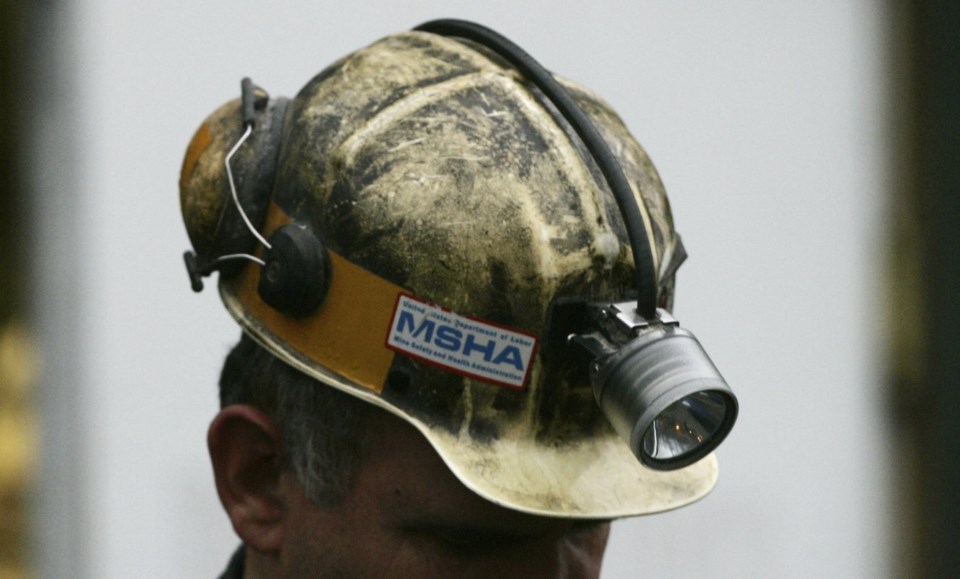CHARLESTON, W.Va. (AP) — The U.S. Mine Safety and Health Administration is among the federal agencies selected for spending cuts by the Department of Government Efficiency.
Nearly three dozen MSHA offices would have their leases terminated if the plans come to fruition.
MSHA is responsible for enforcing U.S. mine safety laws. DOGE was created by President Donald Trump and is run by Elon Musk.
Where are the MSHA offices being considered for closure?
According to the DOGE website, 34 MSHA offices in 19 states have been targeted for closure. This includes seven in Kentucky, which would leave the fifth-leading coal producing state with just two MSHA facilities.
There also are four offices slated to close in Pennsylvania; two apiece in California, Nevada, New York, Ohio, Texas and West Virginia; and one each in Alabama, Arizona, Colorado, Illinois, Indiana, Minnesota, New Hampshire, Oregon, South Dakota, Tennessee and Wyoming.
Are other mining offices involved?
Also under consideration for closure are the Office of Surface Mining Reclamation and Enforcement facilities in Lexington, Kentucky, and Tulsa, Oklahoma, shrinking the national footprint of an agency created during the Carter administration to restore land damaged by strip mining and reclaim abandoned and damaged minelands.
Potential savings
Ending the MSHA leases is projected to save $18 million. It’s unclear whether inspectors' positions and other jobs from those offices would be moved to other facilities.
MSHA responsibilities
MSHA was created by Congress within the Labor Department in 1978, in part because state inspectors were seen as too close to the industry to force coal companies to take the sometimes costly steps necessary to protect miners. MSHA is required to inspect each underground mine quarterly and each surface mine twice a year.
Agency inspectors are supposed to check every working section of a mine. They examine electrical and ventilation systems that protect miners from deadly black lung disease, inspect impoundment dams and new roof bolts, and make sure mining equipment is safe, said Jack Spadaro, a longtime mine safety investigator and environmental specialist who worked for MSHA.
Mining fatalities over the past four decades have dropped significantly, in large part because of the dramatic decline in coal production. But the proposed DOGE cuts would require MSHA inspectors to travel farther to get to a mine, and Spadaro said that could lead to less thorough inspections.
A review last month of publicly available data by the Appalachian Citizens’ Law Center indicates that nearly 17,000 health and safety inspections were conducted from the beginning of 2024 through February 2025 by staff at MSHA offices in the facilities on the chopping block. MSHA, which also oversees metal and nonmetal mines, already is understaffed. Over the past decade, it has seen a 27% reduction in total staff, including 30% of enforcement staff in general and 50% of enforcement staff for coal mines, the law center said.
Coal facts and figures
The coal industry has been in decline as utilities have installed more renewable energy and converted coal-fired plants to be fueled by cheaper and cleaner-burning natural gas.
U.S. coal production was at 1 billion tons (907,000 metric tons) in 2014 and fell to 578 million tons (524 million metric tons) by 2023, the latest year available, according to the U.S. Energy Information Administration. It has been in a long, steep decline for decades.
Coal industry deaths were in the hundreds throughout the 1950s and 1960s. After MSHA was created, deaths steadily decreased, then dropped even further in the last decade as a growing number of mining companies shut down and thousands of jobs were eliminated. There have been 11 or fewer deaths in each of the past five years, according to MSHA.
Coal employment rebounded from 2022 to 2023, rising 4.2% to 45,476. West Virginia employed the most miners at 14,000, followed by Kentucky at 5,000. About half of the nation’s 560 coal mines are located in West Virginia (165) and Kentucky (112). Despite having just 15 mines, Wyoming was the highest-producing coal state due to mechanization.
___
John Raby And Leah Willingham, The Associated Press




